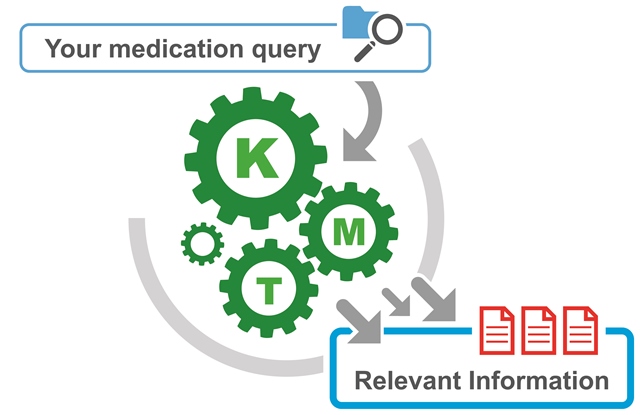By Edmond Chiu and Certina Ho
Medication safety in Canada is an area that many stakeholders can relate to. From pharmacists to physicians, from nurses to patients, each of these groups considers medication safety a core value in healthcare. Throughout this decade, the Canadian Medication Incident Reporting and Prevention System (CMIRPS) has brought together the Institute for Safe Medication Practices Canada (ISMP Canada), Canadian Institute for Health Information (CIHI), Canadian Patient Safety Initiative (CPSI) and Health Canada, to collect, analyze, and share medication incidents reported by Canadians and healthcare professionals alike. The learnings from this initiative are vast and its power continues to grow with new incidents and themes being generated from ongoing incident analyses. With the increasing volume of shared learning, there is a need for a new resource to help manage and support information search and retrieval. The Knowledge Mobilization Tool (KMT) is a novel approach to address this need. The KMT serves as the next generation tool in medication safety.
What is the Knowledge Mobilization Tool (KMT)?
The KMT is an educational tool providing healthcare practitioners with relevant, context-specific information at the point of conducting medication incident analyses or performing quality improvement initiatives (Figure 1). Users can search for medication incident analyses and learnings, using variables, such as, drug name, type of error, stage in the medication-use process, and more. The search conducted by the KMT will retrieve from the ISMP Canada database of medication incident analyses and generate a report containing relevant results in three categories: (1) Published Incidents; (2) Contributing Factors; and (3) Published Recommendations.
How can the KMT be used?
Consider a pharmacy has identified a medication error involving mix-ups between bisoprolol (a cardiovascular medication) and bisacodyl (a laxative). When performing quality improvement for the pharmacy, the team would like to know if this type of mix-up or similar incident has been reported by other healthcare professionals and whether previous analyses have been conducted regarding the mix-up between these two medications. The pharmacy team can use the KMT to learn more from incident analyses generated by ISMP Canada.
KMT Input – Medication Query
The search using the KMT reveals information on Published Incidents and Contributing Factors of medication incidents. The pharmacy team recognizes that it is not the first time a mix-up like this has occurred and reported in other healthcare settings. The team also explores and discusses the contributing factors to help them identify system-level solutions for the pharmacy. In this case, the results generated by the KMT highlight that look-alike/sound-alike drug names, lack of drug or patient information (at the order-entry stage), proximity of drug names in the selection menu of the dispensing software, and proximity of the storage location of the two medications with look-alike/sound-alike names are potential contributing factors of the incident.
KMT Output – Relevant information
At the same time, the KMT provides a link to relevant ISMP Canada Safety Bulletin(s) where pharmacy staff can find additional details behind the contributing factors, as well as recommendations at each stage of the medication-use process regarding how to prevent future mix-up between bisoprolol and bisacodyl. The team can then decide to have a quality improvement meeting to follow-up and agree on which recommendation(s) to undertake at the pharmacy.
What does the KMT mean for you?
The KMT enables you to find previous incident analyses and recommendations that ISMP Canada has identified from medication incident reporting by Canadians and healthcare professionals. The context-specific search algorithm makes it easy to find what is available in the wealth of medication incident analyses and recommendations that ISMP Canada has published and disseminated. The KMT facilitates shared learning from previous medication incidents in a novel approach by providing information at the point of quality improvement to help drive decision-making and advance safe medication use in the healthcare setting.
The future of KMT
Currently, the KMT is a knowledge translation/retrieval tool. In the future, the KMT can be integrated into medication incident reporting programs. For example, consider a medication incident is being reported by a healthcare provider (i.e. the reporter). Since the variables being required for incident reporting are the same as the search criteria that need to be inputted to the KMT, the reporting program can respond to the reporter of the medication incident with the output generated by the KMT, which includes relevant information pertaining to previously (1) Published Incidents; (2) Contributing Factors; and corresponding (3) Published Recommendations. The reporter will not only share a new medication incident, but also simultaneously learn from previous incidents and analyses.
The quantity of relevant information will grow as medication incidents continue to be reported and analyzed; the KMT will help make the shared learning from medication incidents searchable and accessible. Medication safety will continue to be a priority in healthcare settings and the KMT is a key resource to facilitate and support healthcare practitioners to become proactive about it.
The Knowledge Mobilization Tool (KMT) is accessible at https://secure.ismp-canada.org/KMT/
Edmond Chiu is a PharmD Student at the Leslie Dan Faculty of Pharmacy, University of Toronto; and a Medication Safety Analyst at the Institute for Safe Medication Practices Canada (ISMP Canada); Certina Ho is a Project Lead at ISMP Canada.


